
Introduction
Paris, often referred to as the “City of Light,” is a timeless metropolis that exudes elegance, charm, and romance at every corner. Renowned for its iconic landmarks, world-class museums, and vibrant culture, Paris holds a special place in the hearts of travellers worldwide. From the majestic Eiffel Tower standing tall against the skyline to the enchanting streets of Montmartre, Paris offers an endless array of attractions and experiences to captivate visitors of all ages and interests.
Steeped in history and culture, Paris has been a centre of art, literature, and intellectual thought for centuries. From the grandeur of the Louvre Museum, home to priceless works of art like the Mona Lisa, to the historic cobblestone streets of the Latin Quarter, where Hemingway and Fitzgerald once roamed, the city’s rich heritage is palpable at every turn. Whether indulging in world-class cuisine at charming bistros, exploring the opulent Palace of Versailles, or simply wandering along the Seine River, Paris promises an unforgettable journey filled with beauty, inspiration, and joie de vivre.
Table of Contents
Map of the Best Things to Do in Paris
Eiffel Tower
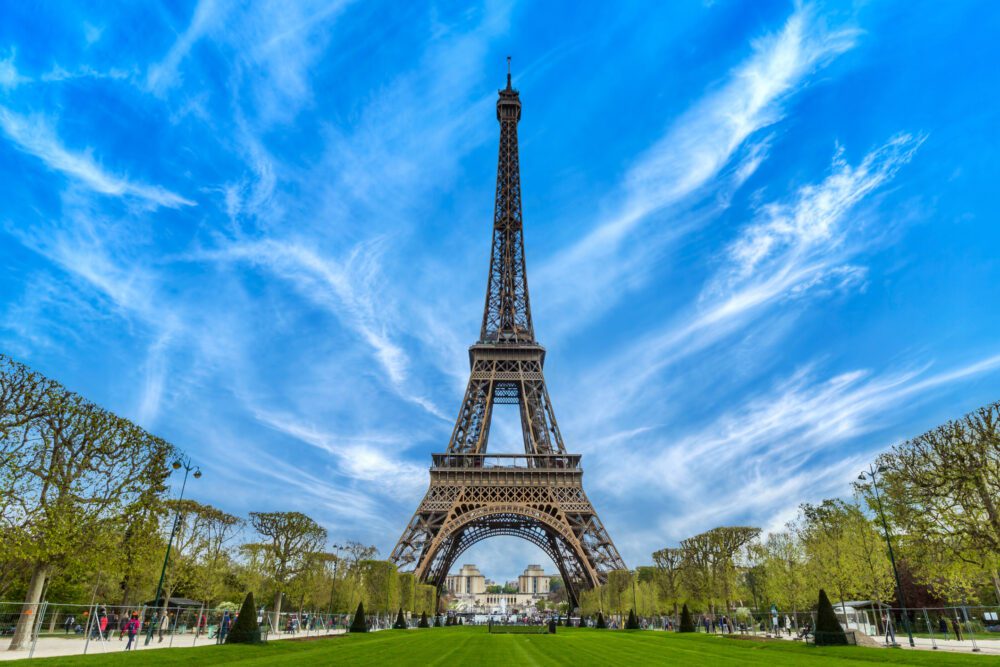
The Eiffel Tower stands as the quintessential symbol of Paris, an iconic landmark that has come to represent the city’s spirit and allure. Designed by Gustave Eiffel for the 1889 World’s Fair, this towering masterpiece was initially met with scepticism but has since become one of the most visited monuments in the world. Rising to a height of 324 meters, the iron lattice structure offers breathtaking panoramic views of Paris from its observation decks. Visitors can ascend to the top via elevators or, for a more adventurous experience, climb the stairs to admire the cityscape below. Illuminated by night, the Eiffel Tower casts a magical glow over the city, making it a must-visit destination for travellers seeking romance and enchantment.
Practical tips for visiting the Eiffel Tower include booking tickets in advance to avoid long queues, especially during peak tourist seasons. Opting for a visit at sunset allows for a spectacular view of Paris as the city transitions from day to night, with the twinkling lights creating a mesmerizing ambience. Additionally, consider combining the visit with a picnic at the Champ de Mars, the vast green space that stretches out in front of the tower, offering a perfect spot to relax and savour the iconic Parisian atmosphere. Whether admiring it from afar or ascending to its summit, the Eiffel Tower promises an unforgettable experience that embodies the essence of Parisian charm and grandeur.
Arc de Triomphe

Standing proudly at the western end of the Champs-Élysées, the Arc de Triomphe is a monumental symbol of France’s rich history and military triumphs. Commissioned by Napoleon Bonaparte in 1806 to commemorate the victories of the French armies, the arch was completed in 1836 under the reign of King Louis Philippe. Its grandeur is evident in its imposing structure, adorned with intricate reliefs and sculptures that depict scenes from French military history. The Tomb of the Unknown Soldier lies beneath the arch, serving as a poignant reminder of the sacrifices made during World War I. Visitors can ascend to the top of the Arc de Triomphe for panoramic views of Paris, offering a stunning vista of the city’s famous landmarks, including the Eiffel Tower, the Louvre, and the Sacré-Cœur Basilica.
Practical tips for visiting the Arc de Triomphe include using the underground pedestrian tunnel to access the monument safely, as crossing the busy roundabout surrounding it can be hazardous. It’s advisable to purchase tickets in advance to avoid waiting in long lines, especially during peak tourist seasons. Sunset offers an ideal time to visit, as the warm hues of the evening light cast a golden glow on the monument, creating a magical atmosphere. Additionally, consider combining the visit with a stroll down the Champs-Élysées, Paris’s most famous avenue, lined with shops, cafes, and theatres, offering a quintessential Parisian experience. A visit to the Arc de Triomphe provides not only a glimpse into France’s storied past but also a breathtaking view of the vibrant cityscape that continues to captivate visitors from around the world.
Champs-Élysées
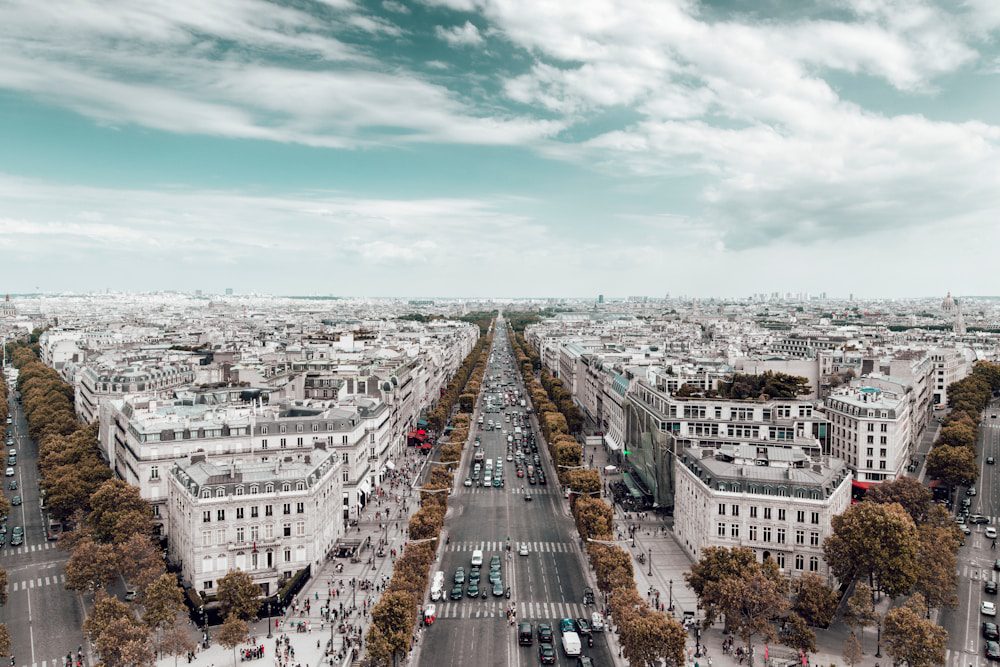
Stretching from the Place de la Concorde to the Arc de Triomphe, the Champs-Élysées is one of the most famous avenues in the world, renowned for its elegance, luxury boutiques, and cultural landmarks. Originally laid out in the 17th century, the avenue underwent significant transformations over the centuries before becoming the iconic boulevard it is today. It has served as the backdrop for numerous historical events, including parades, celebrations, and protests. The Champs-Élysées is lined with prestigious shops, cafes, and theatres, making it a favourite destination for both locals and tourists alike. Visitors can take a stroll along the avenue, admiring its grand architecture, lush gardens, and vibrant atmosphere.
Practical tips for exploring the Champs-Élysées include starting your walk from the Place de la Concorde, where you can marvel at the impressive Obelisk of Luxor and enjoy views of the Tuileries Garden. As you make your way up the avenue, be sure to stop at iconic landmarks such as the Grand Palais and the Petit Palais, which often host art exhibitions and cultural events. Shopping enthusiasts will delight in the wide array of luxury boutiques and department stores that line the avenue, offering everything from high-end fashion to gourmet delicacies. To fully experience the charm of the Champs-Élysées, consider visiting in the evening when the avenue is beautifully illuminated, creating a magical ambience that is quintessentially Parisian.
Louvre Museum
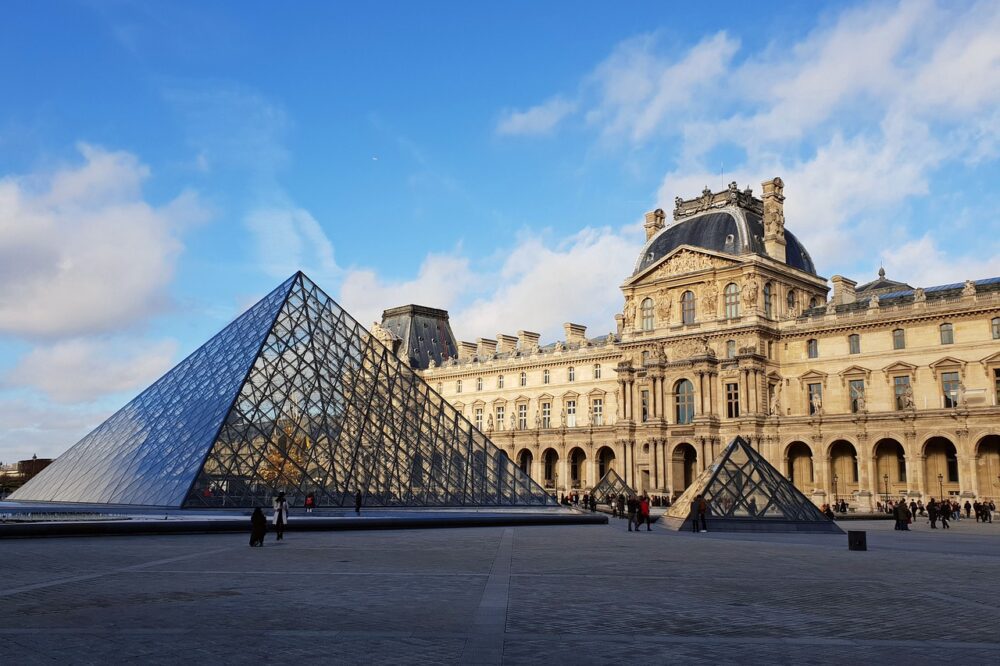
The Louvre Museum, located in the heart of Paris, is not only one of the world’s largest and most visited museums but also a historic monument in its own right. Originally built as a fortress in the late 12th century, the Louvre underwent numerous expansions and renovations over the centuries, eventually transforming into the magnificent palace we see today. It officially became a public museum during the French Revolution in 1793, showcasing an extensive collection of art and artefacts spanning thousands of years and diverse civilizations. The museum’s iconic glass pyramid entrance was designed by Architect I. M. Pei and completed in 1989, has become a symbol of Paris and a must-see for visitors from around the globe.
Practical tips for visiting the Louvre Museum include purchasing tickets online in advance to skip the often long lines at the entrance. Once inside, consider planning your visit by prioritizing the artworks and exhibits you most want to see, as the museum’s vast size can be overwhelming. Highlights include famous works such as the Mona Lisa, the Venus de Milo, and the Winged Victory of Samothrace, but be sure to also explore lesser-known treasures tucked away in the museum’s many galleries. To avoid crowds, consider visiting early in the morning or later in the afternoon, and take advantage of quieter areas of the museum, such as the Richelieu Wing or the Pavillon de l’Horloge.
Le Marais

Le Marais, located in the 3rd and 4th arrondissements of Paris, is a historic district known for its charming narrow streets, medieval architecture, and vibrant atmosphere. Originally marshland (hence the name “Le Marais,” which means “the marsh” in French), the area was drained and developed in the 12th century. It became a fashionable aristocratic neighbourhood in the 17th century, home to numerous mansions (or “hôtels particuliers”) built by noble families. Today, Le Marais is celebrated for its rich cultural heritage, blending historic landmarks with trendy boutiques, art galleries, cafes, and restaurants. Visitors can explore iconic attractions such as Place des Vosges, the oldest planned square in Paris, and Hôtel de Ville, the city hall of Paris with its stunning Renaissance architecture.
Practical tips for exploring Le Marais include wearing comfortable shoes as you wander the cobblestone streets and narrow alleys, taking in the area’s unique ambience. Be sure to visit the Musée Carnavalet, dedicated to the history of Paris, and the Musée Picasso, showcasing the works of the renowned artist Pablo Picasso. Food enthusiasts will delight in the neighbourhood’s diverse culinary scene, with plenty of options ranging from traditional French bistros to trendy cafes offering delicious pastries and artisanal treats. Don’t miss the opportunity to explore Le Marais on a Sunday when many shops and museums are open, and the area comes alive with street performers, artists, and local vendors.
Sainte-Chapelle
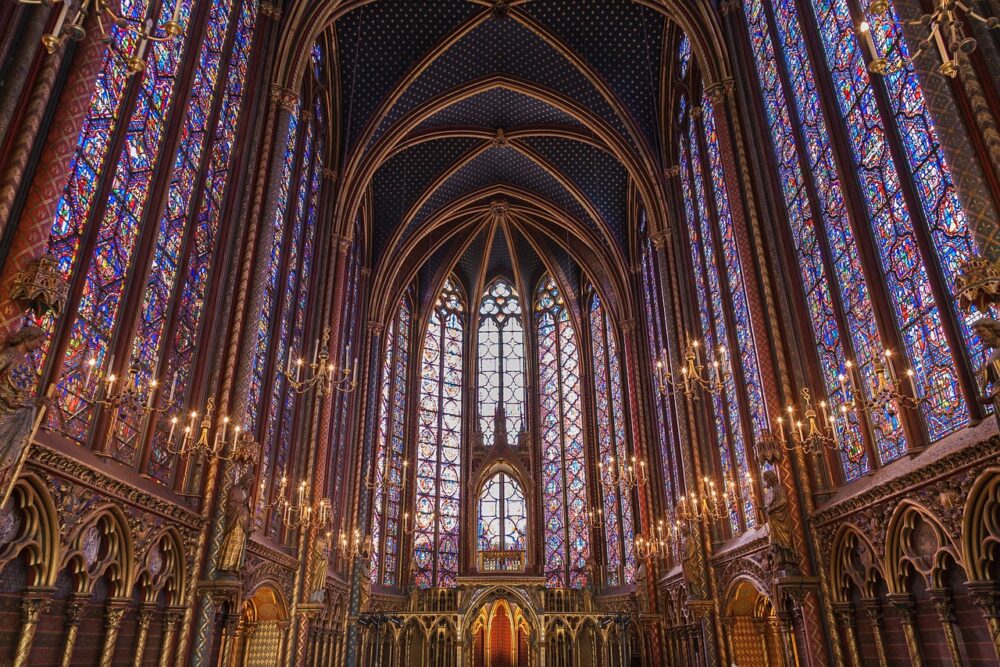
Sainte-Chapelle, located on the Île de la Cité in the heart of Paris, is a masterpiece of Gothic architecture and a stunning example of medieval craftsmanship. Built in the 13th century by King Louis IX to house holy relics, including the Crown of Thorns, Sainte-Chapelle is renowned for its exquisite stained glass windows. The chapel’s upper level features a magnificent display of 15 stained glass windows, each soaring over 15 meters high and depicting biblical scenes, making it one of the most impressive collections of medieval stained glass in the world. The intricate designs and vibrant colours of the windows create a breathtaking kaleidoscope of light that fills the chapel’s interior with an ethereal glow. Visitors can also admire the intricate stone carvings, ornate wooden furnishings, and beautiful vaulted ceilings adorned with delicate ribbed arches.
Practical tips for visiting Sainte-Chapelle include purchasing tickets in advance to avoid long lines, especially during peak tourist seasons. It’s recommended to arrive early in the day to enjoy the chapel with fewer crowds and better lighting for appreciating the stained glass windows. Guided tours are available for those interested in learning more about the history and significance of Sainte-Chapelle, providing insights into its architectural features and the religious context in which it was built. Additionally, visitors should be mindful of the chapel’s strict security measures, including bag checks, and dress modestly as a sign of respect for this sacred space.
Notre Dame Cathedral
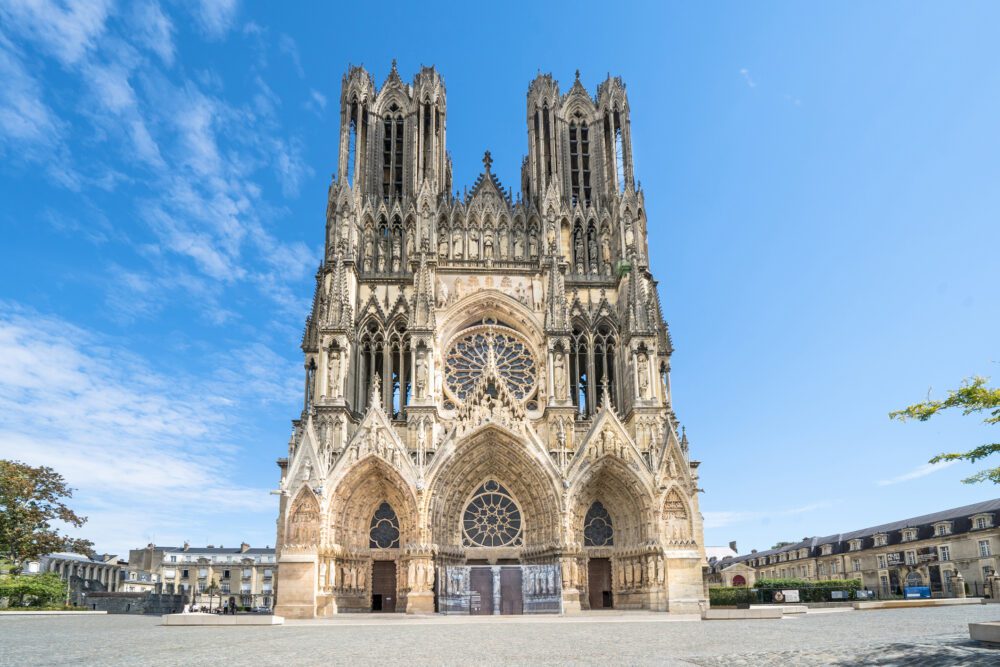
Notre-Dame Cathedral, one of the most iconic landmarks in Paris, stands as a symbol of French Gothic architecture and religious heritage. Construction of the cathedral began in the 12th century and continued for nearly 200 years, resulting in a masterpiece of medieval craftsmanship. Notre Dame’s striking façade, adorned with intricate stone carvings and sculptures depicting biblical scenes, captivates visitors with its grandeur and beauty. The cathedral’s soaring spires and imposing bell towers dominate the Parisian skyline, offering breathtaking views of the city from its elevated vantage point. Inside, visitors are greeted by a cavernous interior filled with awe-inspiring stained glass windows, towering columns, and majestic arches. Highlights include the Rose Window, a stunning masterpiece of medieval glasswork, and the intricately carved choir stalls and pulpit.
Practical tips for visiting Notre-Dame Cathedral include arriving early in the day to avoid long lines and crowds, especially during peak tourist seasons. While access to the interior may be limited due to ongoing restoration work following the devastating fire in 2019, visitors can still appreciate the cathedral’s exterior architecture and take in panoramic views of Paris from the surrounding square. Guided tours are available for those interested in delving deeper into Notre Dame’s history and architectural significance, providing insights into its construction, religious symbolism, and role in French culture. Additionally, visitors should be mindful of the cathedral’s status as a place of worship and observe respectful behaviour during their visit.
Seine River Cruise
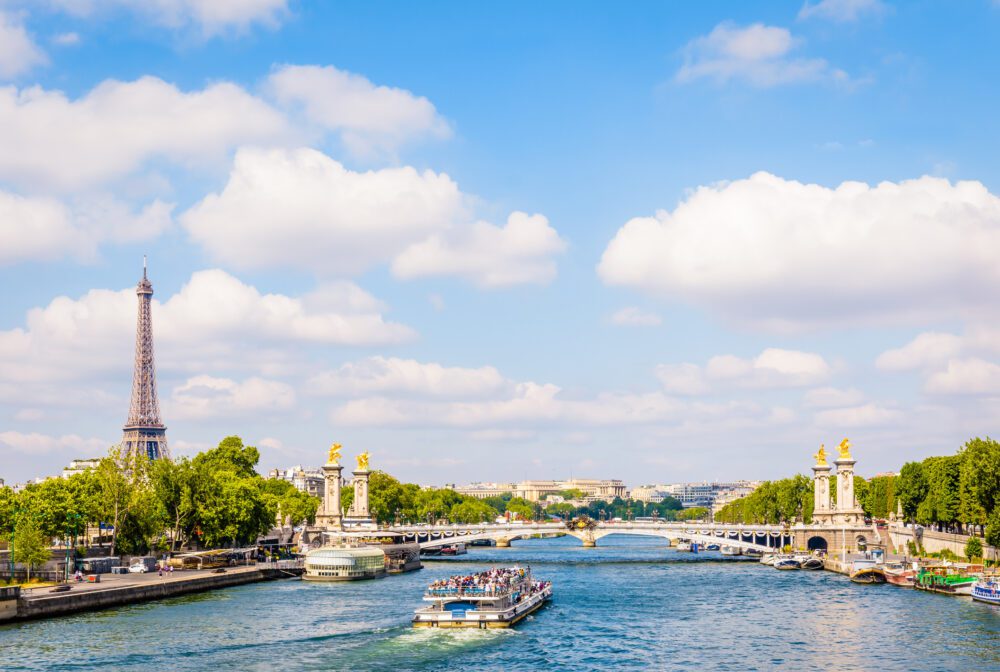
A Seine River cruise offers a unique perspective on Paris, allowing visitors to admire the city’s most iconic landmarks from the tranquil waters of the river. The Seine River has been a vital waterway for Paris since ancient times, serving as a key transportation route for trade and commerce. Today, it provides a scenic backdrop for leisurely boat tours that showcase the city’s architectural treasures and historical monuments. As you glide along the river, you’ll pass by famous landmarks such as the Eiffel Tower, Notre Dame Cathedral, and the Louvre Museum, each illuminated in the soft glow of twilight. Many cruises also offer informative commentary in multiple languages, providing fascinating insights into Parisian history, culture, and architecture as you sail past centuries-old bridges and charming riverside neighbourhoods.
Practical tips for enjoying a Seine River cruise include choosing a tour that suits your preferences, whether it’s a daytime excursion or a romantic evening cruise under the stars. Be sure to book your tickets in advance, especially during peak tourist seasons, to secure your preferred departure time and seating arrangements. While some cruises offer onboard amenities such as refreshments and live entertainment, others focus more on sightseeing, so it’s essential to research and select a cruise that aligns with your interests. Opt for a seat on the outdoor deck for the best views and photo opportunities, and don’t forget to dress appropriately for the weather, as temperatures can vary depending on the time of day and season.
Latin Quarter
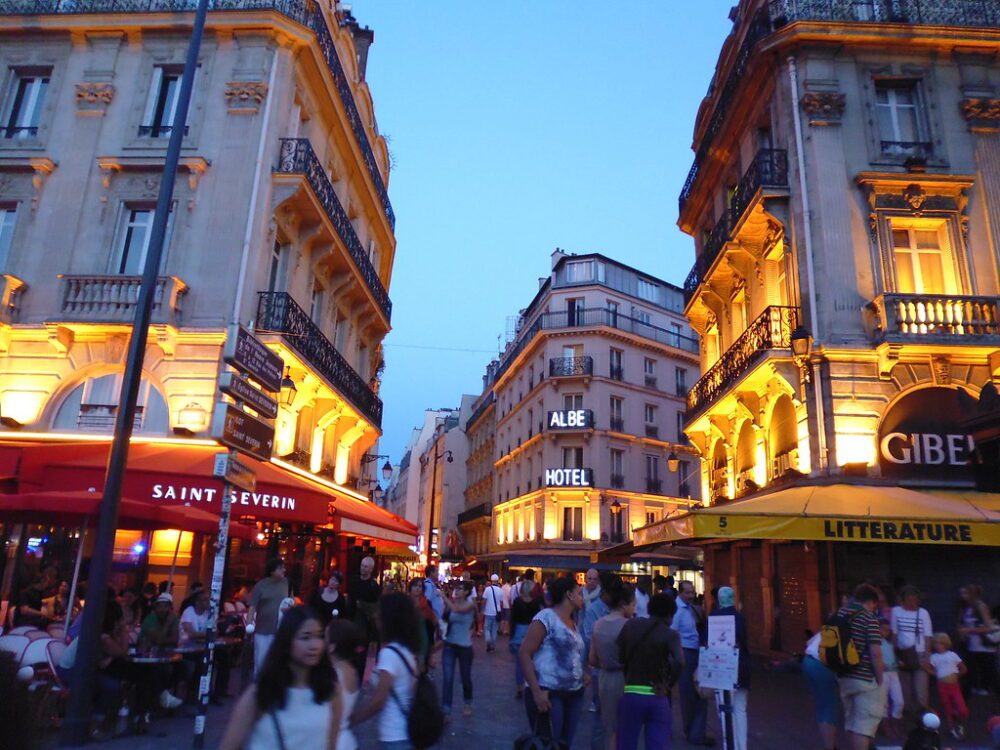
The Latin Quarter, situated on the left bank of the River Seine, is one of the oldest and most vibrant neighbourhoods in Paris, renowned for its rich history, intellectual atmosphere, and bohemian charm. Dating back to the Middle Ages, the Latin Quarter earned its name due to the Latin-speaking scholars who once inhabited the area surrounding the Sorbonne University. Today, it remains a hub of academic activity, with numerous universities, colleges, and research institutions dotting its narrow streets and picturesque squares. Visitors can explore the neighbourhood’s winding medieval alleyways, stumble upon hidden courtyards, and marvel at its eclectic mix of architectural styles, from Gothic churches to elegant Haussmannian buildings.
Practical tips for exploring the Latin Quarter include taking the time to wander aimlessly and soak up the neighbourhood’s unique ambience, discovering quaint bookshops, lively cafes, and bustling markets along the way. Don’t miss the opportunity to visit iconic landmarks such as the Pantheon, where many of France’s most illustrious figures are buried, and the enchanting Luxembourg Gardens, perfect for a stroll or a peaceful picnic. Food enthusiasts will delight in the Latin Quarter’s diverse culinary scene, which offers everything from traditional French bistros and cosy wine bars to international eateries serving cuisine from around the world. Additionally, be sure to check out the neighbourhood’s vibrant nightlife, with numerous bars, jazz clubs, and theatres hosting performances late into the night.
Luxembourg Gardens

Luxembourg Gardens, or Jardin du Luxembourg, is one of Paris’s most iconic and beloved green spaces, offering a tranquil escape from the bustling city streets. Commissioned by Queen Marie de’ Medici in the early 17th century, the gardens were inspired by the Boboli Gardens in Florence and were originally part of the Luxembourg Palace, which now houses the French Senate. Designed in the formal French style, the gardens feature meticulously manicured lawns, tree-lined promenades, and beautiful flowerbeds, all surrounding a large octagonal basin where children sail model boats. Visitors can also explore the lush orchards, romantic alleys, and picturesque pavilions scattered throughout the park, making it a favourite spot for strolls and peaceful picnics.
Practical tips for enjoying Luxembourg Gardens include arriving early in the morning to avoid crowds and savouring the serene atmosphere before the park fills up. Don’t miss the opportunity to admire the stunning Medici Fountain, a masterpiece of Renaissance design nestled amid lush greenery and shaded by towering trees. Art enthusiasts will appreciate the park’s collection of statues, including the iconic Statue of Liberty, a smaller-scale replica of the famous monument in New York City. Families with children will find plenty of entertainment options, from playgrounds and pony rides to puppet shows and vintage carousel rides. Additionally, the gardens host various cultural events and activities throughout the year, including concerts, art exhibitions, and open-air film screenings, providing visitors with a delightful blend of nature, culture, and relaxation in the heart of Paris.
Musée d’Orsay
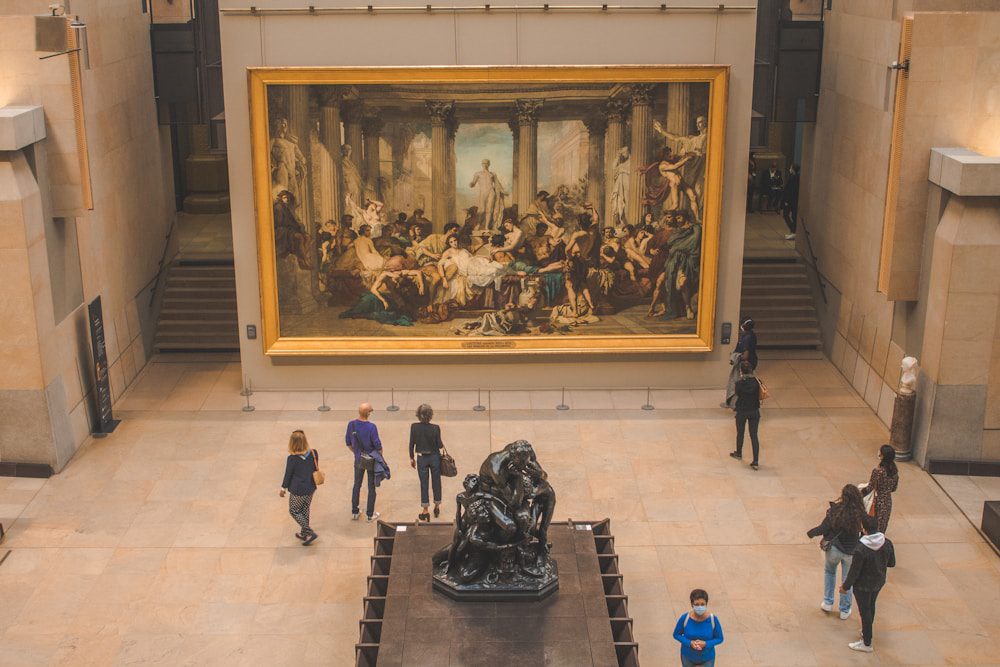
Housed in a stunning Beaux-Arts railway station along the Seine River, the Musée d’Orsay is renowned for its unparalleled collection of Impressionist and Post-Impressionist masterpieces. Originally built for the Universal Exhibition of 1900, the museum boasts an extensive collection of artworks spanning the mid-19th to early 20th centuries, showcasing the revolutionary styles and techniques pioneered by artists such as Monet, Renoir, Van Gogh, and Degas. Visitors can marvel at iconic works like Claude Monet’s “Water Lilies,” Vincent van Gogh’s “Starry Night Over the Rhône,” and Edgar Degas’ “The Ballet Class,” among countless other treasures. The museum’s architectural grandeur, with its soaring ceilings, ornate ironwork, and expansive glass windows, provides a fitting backdrop for the extraordinary artistry on display.
Practical tips for visiting the Musée d’Orsay include purchasing tickets online in advance to skip the often lengthy queues, particularly during peak tourist seasons. Audio guides are available in multiple languages, offering insightful commentary on the museum’s highlights and key artworks. To make the most of your visit, consider starting on the upper floors and working your way down, beginning with the Impressionist galleries on the fifth floor before descending to the Post-Impressionist and Art Nouveau collections on the lower levels. Be sure to take advantage of the museum’s cafes and restaurants, which offer a welcome respite for refreshments and a chance to admire the stunning views of the Seine River and Parisian skyline.
Palais Garnier
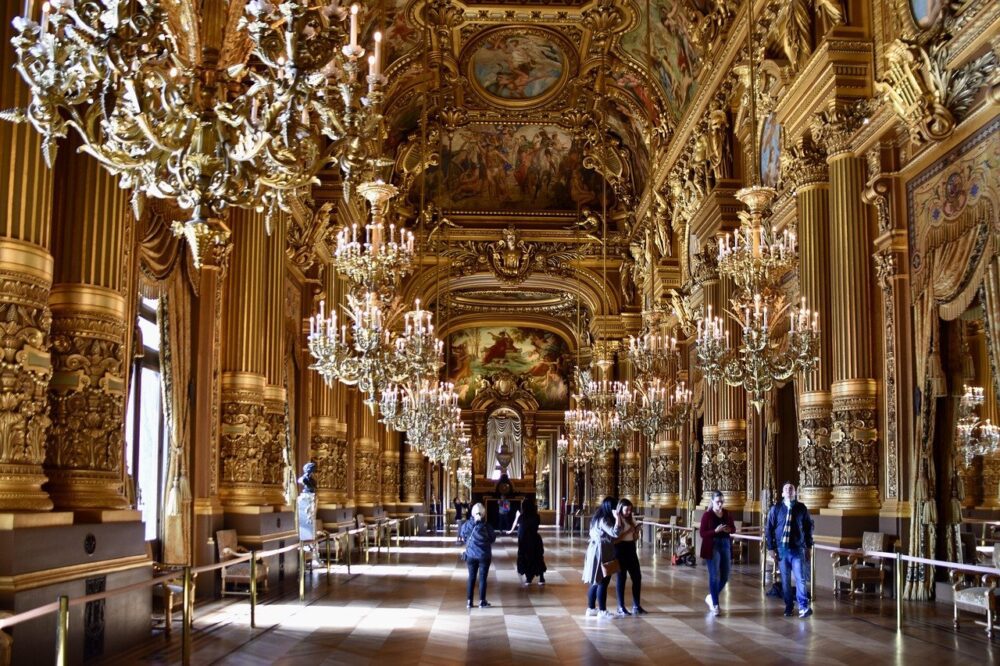
The Palais Garnier, also known as the Opéra Garnier, stands as one of the most opulent and iconic landmarks in Paris, exemplifying the grandeur and extravagance of 19th-century French architecture. Designed by architect Charles Garnier and inaugurated in 1875, the opera house was commissioned by Emperor Napoleon III and named after its visionary architect. Its façade features an ornate blend of Classical and Baroque elements, adorned with intricate sculptures, Corinthian columns, and gilded embellishments, making it a masterpiece of Second Empire design. The interior is equally breathtaking, with its magnificent Grand Staircase, adorned with marble, bronze, and crystal, leading to the sumptuous Grand Foyer, where visitors are enveloped in a lavish display of chandeliers, mirrors, and painted ceilings. The pièce de résistance is the stunning auditorium, with its majestic chandelier, adorned with over 7,000 crystals, and the breathtaking ceiling mural “Chagall’s Dream,” painted by Marc Chagall in 1964.
Practical tips for visiting the Palais Garnier include taking a guided tour to fully appreciate its splendour and learn about its rich history. Tours typically provide access to areas not open to the general public, including the auditorium, Grand Foyer, and Rotunda, offering a behind-the-scenes glimpse into the world of opera and ballet. Visitors should also consider attending a performance at the Palais Garnier to experience the magic of live opera or ballet in one of the world’s most prestigious venues. Tickets can be purchased online in advance or at the box office, with a range of seating options to suit every budget.
Moulin Rouge
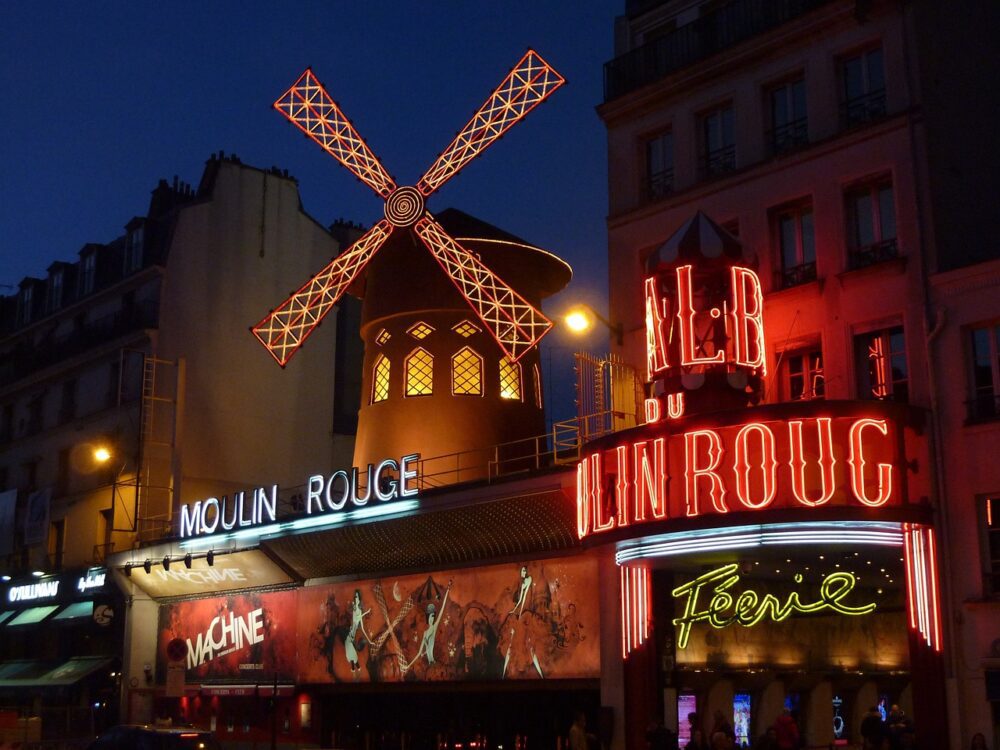
The Moulin Rouge, immortalized in literature, art, and film, is synonymous with the vibrant spirit and bohemian charm of Paris’s Montmartre district. Established in 1889 by Joseph Oller and Charles Zidler, the Moulin Rouge quickly became a cultural icon, attracting artists, writers, and socialites from around the world. Its iconic red windmill and dazzling cabaret shows made it a symbol of Parisian nightlife and hedonism during the Belle Époque era. The Moulin Rouge is perhaps best known for its can-can dancers, who have been captivating audiences with their high-energy performances for over a century. Over the years, the cabaret has welcomed legendary performers such as Edith Piaf, Josephine Baker, and Frank Sinatra, cementing its status as a must-visit destination in Paris.
Practical tips for experiencing the Moulin Rouge include booking tickets well in advance, especially during peak tourist seasons, to secure your spot at one of its legendary shows. The cabaret offers a variety of ticket options, from show-only tickets to dinner and show packages, allowing visitors to tailor their experience to their preferences and budget. While the Moulin Rouge is renowned for its extravagant shows, visitors should also take the time to admire its historic façade and iconic windmill, which have remained unchanged for over a century. Additionally, guests should dress to impress, as the Moulin Rouge maintains a strict dress code, with elegant attire required for admittance.
Montmartre
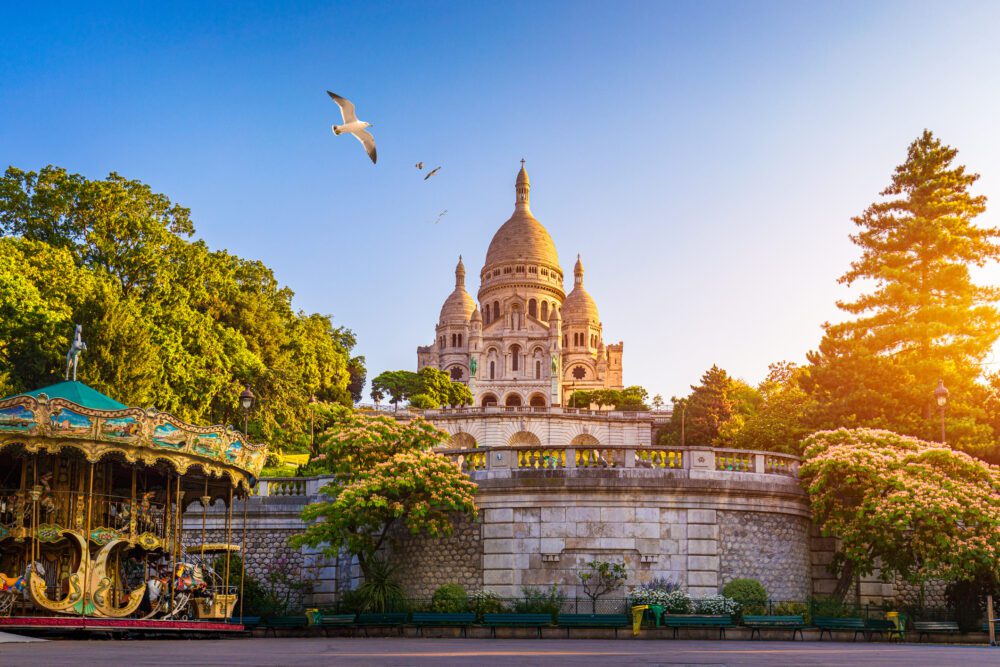
Perched atop a hill overlooking Paris, Montmartre has long been a magnet for artists, writers, and bohemians drawn to its picturesque streets, charming cafés, and vibrant atmosphere. Historically, Montmartre was a rural village outside the city walls of Paris, known for its vineyards and windmills. However, with the rapid expansion of Paris in the 19th century, Montmartre transformed into a bustling neighbourhood filled with cabarets, dance halls, and artists’ studios. It became a centre of creativity and innovation, attracting luminaries such as Pablo Picasso, Vincent van Gogh, and Henri de Toulouse-Lautrec, who sought inspiration from its winding streets and panoramic views of the city.
Practical tips for exploring Montmartre include wearing comfortable shoes, as the neighbourhood’s cobblestone streets can be steep and uneven. Visitors should also take the time to wander off the beaten path to discover hidden gems such as Place Dalida, a charming square dedicated to the iconic French singer, and Rue des Saules, home to some of the last remaining vineyards in Paris. Additionally, a visit to the Sacré-Cœur Basilica is a must, not only for its stunning architecture but also for the breathtaking vistas of Paris from its dome. Art enthusiasts will appreciate the many galleries and street artists lining the Place du Tertre, where they can watch painters at work or purchase unique souvenirs.
Day Trip to Versailles

A day trip to Versailles offers visitors the opportunity to step back in time and experience the grandeur of one of France’s most iconic historical sites. The Palace of Versailles, originally built as a hunting lodge for King Louis XIII, was transformed by his son, Louis XIV, into a magnificent royal residence and seat of power. The palace is renowned for its opulent architecture, lavish furnishings, and sprawling gardens, all of which reflect the extravagant tastes of the French monarchy during the 17th and 18th centuries. Visitors to Versailles can explore the ornately decorated State Apartments, including the famous Hall of Mirrors, where numerous treaties and agreements were signed, shaping the course of European history.
Practical tips for a day trip to Versailles include arriving early to avoid long lines, especially during peak tourist season. It’s also advisable to purchase tickets in advance online to streamline entry. While exploring the palace, consider renting an audio guide or joining a guided tour to gain deeper insights into its history and significance. After touring the palace, take time to stroll through the meticulously landscaped gardens, which feature fountains, sculptures, and manicured lawns spread across more than 800 hectares. Additionally, visitors can opt to explore the Grand Trianon and Petit Trianon, two smaller palaces located within the grounds of Versailles, each offering its own unique glimpse into the royal lifestyle.
Conclusion
Paris stands as a timeless city that continues to capture the hearts and imaginations of travellers from around the world. From iconic landmarks like the Eiffel Tower and Notre Dame Cathedral to the artistic treasures of the Louvre Museum and Musee d’Orsay, Paris offers a wealth of experiences that celebrate its rich history, culture, and artistic heritage. Whether wandering along the cobblestone streets of Montmartre, savouring the flavours of French cuisine in a cosy bistro, or enjoying a stroll through the Luxembourg Gardens, every corner of Paris reveals a new facet of its charm and allure.
With its unparalleled beauty, cultural richness, and romantic ambience, Paris remains a city that leaves an indelible mark on all who visit. Whether you’re drawn to its historical landmarks, world-class museums, vibrant neighbourhoods, or exquisite cuisine, Paris offers a tapestry of experiences that captivate and inspire. As the city of light continues to evolve and thrive, its enduring allure as one of the world’s most beloved destinations is as timeless as the Seine flowing through its heart.
